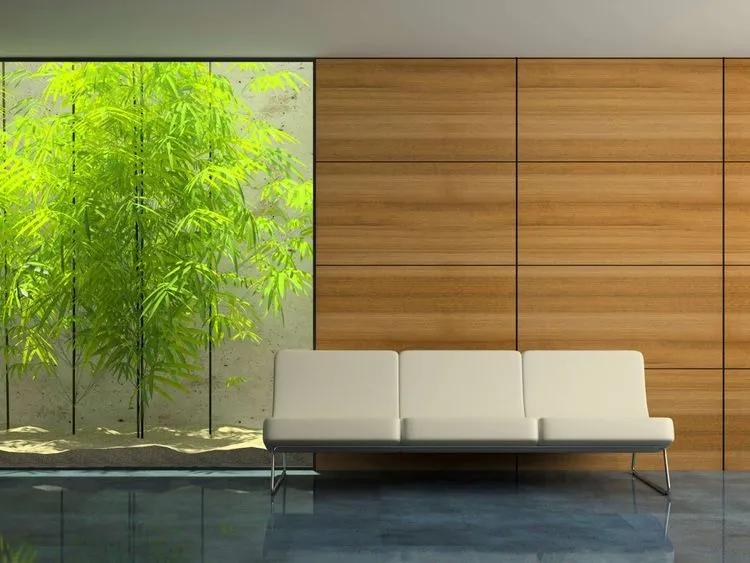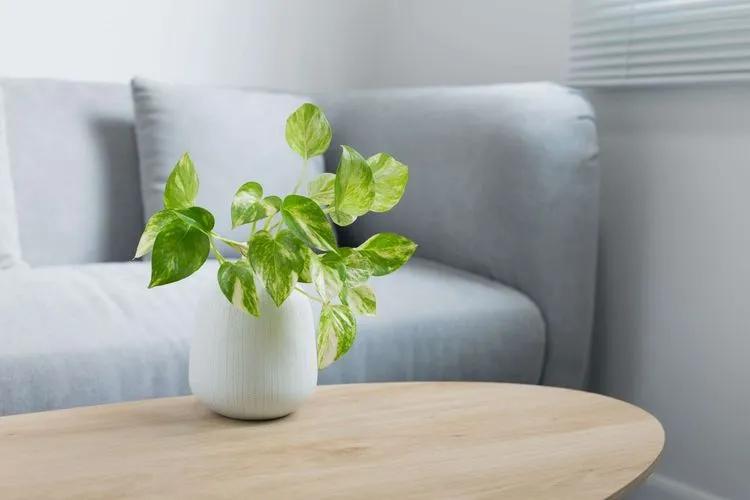 People in industrialized countries spend more than 80% of their lives in enclosed spaces with insufficient air circulation. Such structures require less energy for heating, ventilation and air conditioning, but can be hazardous to human health due to the presence of particulate matter and toxic gases, including carbon monoxide, ozone and volatile organic compounds from furniture, carpets and office equipment. Plants absorb toxins and can improve indoor air quality, but surprisingly little is known about which plants are best for this and how we can enhance their function.
People in industrialized countries spend more than 80% of their lives in enclosed spaces with insufficient air circulation. Such structures require less energy for heating, ventilation and air conditioning, but can be hazardous to human health due to the presence of particulate matter and toxic gases, including carbon monoxide, ozone and volatile organic compounds from furniture, carpets and office equipment. Plants absorb toxins and can improve indoor air quality, but surprisingly little is known about which plants are best for this and how we can enhance their function.
Scientific proof
A team of scientists led by Frederico Brilli, a plant physiologist at the Italian National Research Council, concluded that using well-studied plant properties along with other air purification technologies can improve indoor air quality in an economical and sustainable way. Plants purify the air through several mechanisms: they absorb carbon dioxide and release oxygen through photosynthesis, increase humidity by passing water vapor through the microscopic pores of the leaves, and can passively absorb pollutants from the outer surface of leaves and roots. But few people pay attention to these properties. "For most of us, plants are just a decorative element, something aesthetic ..." says Brilli.
In the 1980s, NASA was researching indoor air purification using plants, but they relied on a simple experimental approach. Scientists are now proposing more sophisticated studies using modern methods to characterize the most efficient indoor plant species, including morphology (that is, leaf shape and size), anatomy and physiology (that is, CO2 assimilation rate). According to Brilli, such studies could show how to “optimize indoor plant use in terms of the number of plants per square meter ...”.
Research is also needed to understand plant microbiomes: populations of microorganisms (bacteria and fungi) that live with plants both in the soil and on leaf surfaces. The microbiome is involved in the removal of pollutants in the air, but the contribution of various microbial species to this process is currently unknown. In addition, some microbiomes can have negative health effects such as allergies. Therefore, the study of the characteristics of indoor plants is of great importance.
Plants are usually loved for their beauty and attractive appearance. Scientists have found that some houseplants purify the air of a number of toxic compounds. Most people know that plants, during photosynthesis, convert carbon dioxide into oxygen. Even this property alone is the basis for the maintenance of their home. Let's figure out how potted flowers are actually useful and whether they make the air cleaner.
Against tobacco smoke
GERBERS (Gerbera jamesonii) fight benzene, trichloroethylene, formaldehyde and toluene. They also freshen up smoke-drenched clothing. They love light and grow well on windowsills. But since these are flowers, you should beware of allergies.
Anti ammonia detergents
In a kitchen or bathroom where cleaning agents are found, Rhapis excelsa fights ammonia, formaldehyde and xylene. Dislikes light, preferring wet rooms. But this large Asian palm requires a lot of space.
In the kitchen and bathroom
ANTHURIUM, or aronic (Anthurium andreanum) adores moisture. This equatorial plant blooms and looks very beautiful in the kitchen or bathroom. Perfectly removes ammonia from detergents and xylene. Toxic if accidentally swallowed.
In a lighted space
 In a spacious room, on a veranda or in a high living room, place the LAOS DATE PALM (Phoenix roebelenii), which actively absorbs xylene and formaldehyde. It tolerates the warmth of bedrooms well and does not require special care.
In a spacious room, on a veranda or in a high living room, place the LAOS DATE PALM (Phoenix roebelenii), which actively absorbs xylene and formaldehyde. It tolerates the warmth of bedrooms well and does not require special care.
In wet rooms
In the bathroom or north room, hang BOSTON FAN (Nephrolepis exaltata), which is effective against xylene and formaldehyde. Ideal in a living room with wood panel furniture. Attention, this tropical plant cannot stand direct sunlight!
Dangerous for formaldehyde
Decorate the living room with RED PHILODENDRON (Philodendron erubescens). It absorbs formaldehyde from furniture and trichlorethylene well. A bathroom is also suitable for him, since the plant is moisture-loving. Small plant, well cultivated.
Against carbon monoxide
Decorate your workshop or any light room with POTHOS (Scindapsus aureus). Cleans the air from carbon monoxide, benzene and toluene. Easy to cultivate. Caution: Its juice can irritate the skin.
Put on the windowsill
 CHRYSANTHEMUM (Chrysanthemum morifolium) absorbs formaldehyde, benzene and ammonia well. It is better to put chrysanthemums in a cool room at night. Their pollen is allergic.
CHRYSANTHEMUM (Chrysanthemum morifolium) absorbs formaldehyde, benzene and ammonia well. It is better to put chrysanthemums in a cool room at night. Their pollen is allergic.
Next to dry cleaning clothes
To neutralize trichlorethylene, place the highly decorative BAMBOO PALM (Chamaedorea seifrizii) next to dry-cleaned clothes. Also filters formaldehyde and toluene. Feels good in a light and well-ventilated atelier.
In the kitchen and living room
In rooms with a lot of formaldehyde (living room, kitchen, bathroom, painted room), hang ivy (Hedera helix). He recycles it, as well as benzene, trichlorethylene, xylene and toluene. Stands well in an office with a lot of plastic (benzene source).
In a freshly painted room
Use AREGA (Chrysalidocarpus lutescens) after work. Effective against formaldehyde and xylene. You can put this palm next to recently painted or varnished furniture, or decorate your nursery with it. Since the plant is tropical, it needs warmth and moisture.
In a room heated by gas
A SPIDER PLANT (Chlorophytum comosum) should be placed next to a gas stove, in a wood-heated room, or in a bathroom with a water heater. It absorbs benzene, toluene, carbon monoxide, xylene and formaldehyde. It does not require special care.
